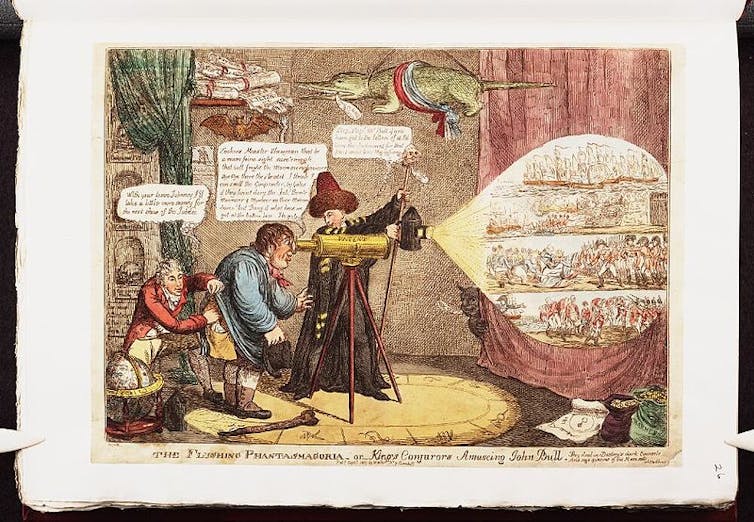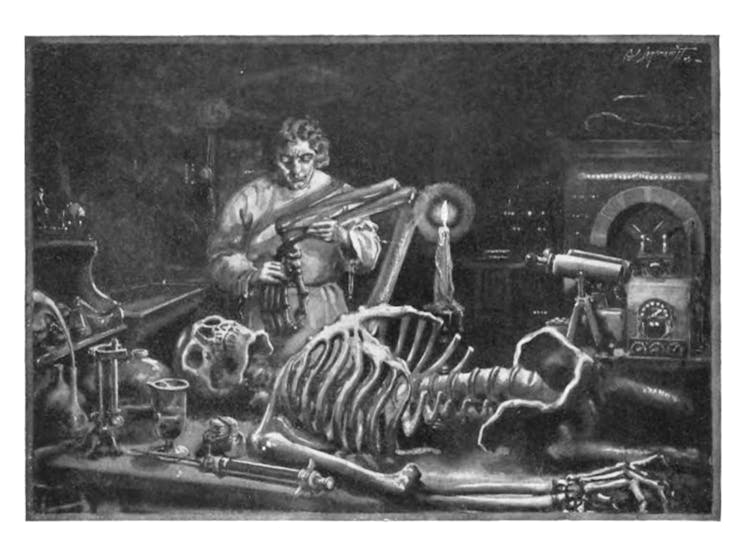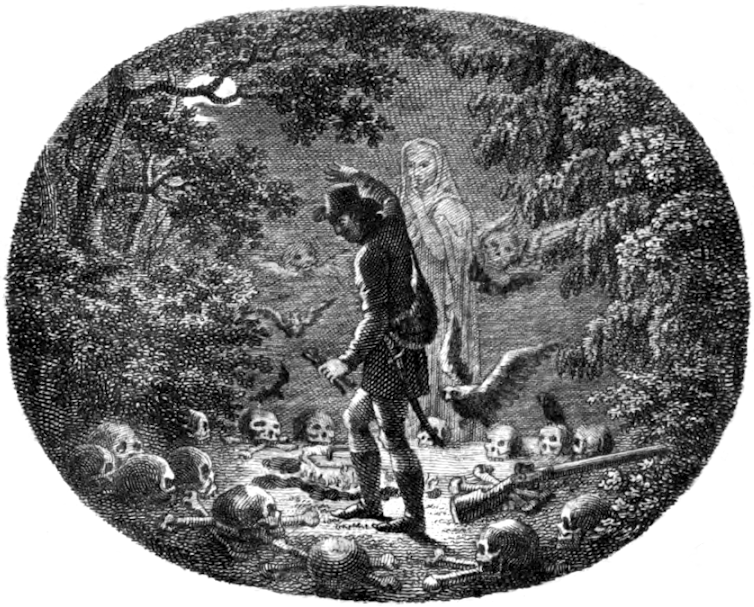Fantasmagoriana: the German book of ghost stories that inspired Frankenstein
The story of how Frankenstein was born is well known, and largely relies on the account given by Mary Shelley in her preface to the 1831 edition to her novel. She and her (soon-to-be) husband, the poet Percy Bysshe Shelley, were summering on the shores of Lake Geneva and close by Lord Byron and his personal physician John Polidori. It was 1816 – the so-called “year without a summer” and the inclement weather kept the party indoors, reading ghost stories as a pastime.
In one of the most famous propositions in literary history, Lord Byron suggested that each of them should try their hand at writing a supernatural tale. Ironically, it was the two novice writers, Mary Shelley and Polidori, whose works have endured. Almost out of nothing, the pair invented modern horror. Polidori’s story, The Vampyre, would inspire Bram Stoker 80 years later to write Dracula, while the 18-year-old Shelley wrote Frankenstein – which also has a good claim to be the first science fiction novel.
Read more: Older than Dracula: in search of the English vampire
The book the Shelleys, Byron, and Polidori were reading during their trip was called Fantasmagoriana. It was an anthology of eight stories of the supernatural published in Paris in 1812 but translated from the German. No indication of authors or of original sources was given and readers were invited to think of stories as of embellished versions of real supernatural cases. The title joyfully played with this ambiguity, evoking the kind of shows, popular at the time, which were known as phantasmagorias.

There was the History of the Inconstant Lover, who […] found himself in the arms of the pale ghost of her whom he had deserted. There was the tale of the sinful founder of his race, whose miserable doom it was to bestow the kiss of death on all the younger sons of his fated house […] he advanced to the couch of the blooming youths, cradled in healthy sleep.
It’s worth looking into the influence of such stories on Frankenstein. At some point in Shelley’s novel, Victor Frankenstein dreams to hold in his arms the “pale ghost” of his bride to be, which may remind us of the story Shelley referred to as History of the Inconstant Lover (in truth, La Morte Fiancée or The Corpse Bride, by Friedrich August Schulze).
Frankenstein’s “Creature” is a gigantic being who causes the extermination of an entire family – a plot device that may have been inspired by what she calls “tale of the sinful founder of his race” who “bestows the kiss of death” on his descendants (actually a story called Le Portraits de Famille – or The Family Portraits, by Johann August Apel).
But if we read Frankenstein with Fantasmagoriana in mind, we see that the influence of those stories is definitely more profound than a simple inspiration.

While trying to describe in the preface to the book: “How I, then a young girl, came to think of, and to dilate upon, so very hideous an idea,” Shelley describes her mental processes as a phantasmagorical show. Imagination, in her words, is a screen onto which stories project impressions. At night, in her bed, Shelley sees “with shut eyes, but acute mental vision” the central scene of her novel to be – the idea of the novel comes first as an image, not as a plot.
It is an image she knows perfectly not to be true – but which is nonetheless frightening: like the ghosts of phantasmagoria shows or of Fantasmagoriana, which were explained to be tricks of the mind, but still left the imperceptible feeling of the uncanny. In Les Portrais de Famille, Shelley read of a ghost “advanc(ing) to the couch of the blooming youths, cradled in healthy sleep” – half asleep she imagines a man in bed, beholding “the horrid thing” he created “stand(ing) at his bedside, opening his curtains”. The story read, in other words, mirrors and anticipates the story to be written.
At her bedside, Shelley too is visited by a ghost – in this case, the ghost of the novel:
On the morrow I announced that I had thought of a story.

 Fabio Camilletti is the Head of Italian Studies at the University of Warwick.
Fabio Camilletti is the Head of Italian Studies at the University of Warwick.
This article is republished from The Conversation under a Creative Commons license.

